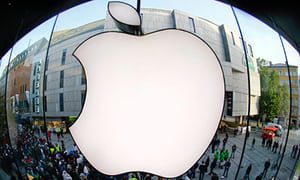
Industry reports continue speculating about upcoming Apple launches in TV and wearables. But product launches are only to be expected – I think one of the more intriguing things about the world’s most talked-about technology company in 2013 is the projection of its own self-image.
Since last month’s Worldwide Developer Conference, during which it launched its stark new mobile operating system, Apple has been running a cross-media ad campaign, “Designed By Apple In California”, to state its core values. Comprising a TV commercial (“Our Signature”, @radical.media), an animated short (“Intention”, TBWA/Media Arts Lab) and matching double-page newspaper spreads, the messaging is an homage to minimalism that poetically communicates the company’s product design ethos: “Every idea we touch enhances each life it touches.”
The campaign is self-indulgent, even by Apple’s standards. But the layers of meaning beneath its hubris are fascinating…
For designers everywhere, not just in Cupertino
Apple’s monologue lauds its expertise in reductive innovation strategy, asking: “Does this (product) deserve to exist?” In doing so, it is extolling a philosophy of functional design minimalism that is not unique to Apple but is shared at heart by all product designers. The diatribe could be an ad for a Dyson vacuum, an interview quote in Creative Review, an art school essay or a manifesto penned by a community of designers…
Dancing to Ive’s tune
That this campaign has at all been conceived, then, speaks volumes about Apple’s newly-anointed design SVP and guru Jonathan Ive’s powerful new place in the post-Jobs pecking order. Tim Cook may be CEO now, but he has apparently compelled his marketers to communicate Ive’s ideology. It is easy to look here and see Ive, not Cook, writing Apple’s story.
Re-amplifying Jobs
That Apple feels the need to do this, however, is interesting. Everyone already knows Ive’s products for their famous simplicity – Apple has finely delivered that message over many years without being overly self-conscious, and this recognition is fresh in the mind from last year’s eulogies to Steve Jobs. Shouting the minimalist mantra further is off-putting, making these ads the worst-received in 26 consecutive Apple commercials, according to one ad measuring firm – suggesting this campaign is more about introspection than communication.
The irony of missed minimalism
The 60-second “Our Signature” commercial is an evocative ad for TV, a medium with the brevity to excuse its indulgence. In print, however, the campaign contradicts the very goal of the reductionism it advocates. Setting an unusual 104-word missive against a typical product photograph slows up comprehension. As one friend said to me whilst flicking through the ad in a Sunday paper this week: “Who wants to read all that?” Creative Review, whose very designer audience is the cloth from which Ive is cut, is more corruscating. “Is this a return to the heyday of long copy?,” it asks, replying: “Sadly, but definitely, not. The copy is dire. Vacuous, boring, self-regarding and counter-productive.”
Answering identified critics
Those 104 words may seem excessive, but this ad covers many bases – many of them being answers to recent challengers and criticisms that are nevertheless unspoken. The ad asks, “When you’re busy making everything, how can you perfect anything?” – a covert attack on Samsung’s iPhone-threatening Galaxy devices range that is replete with a mindboggling number of variants. Similarly, by proudly flaunting its “Designed in California” credentials, Apple is playing to the growing US call to repatriate labour from Asia – Samsung’s home continent. But Apple declines to name its ad’s victim.
Explaining iOS
The campaign also resonates silently with the latest version of Apple’s mobile operating system, iOS 7. After some observers grumbled about the continued use of real-world metaphors in the system interface, Apple duly complied with a pared-down minimalised design refresh. But aspects of that refresh seem so minimal that they convey almost nothing, and risk confusing new users. Such faux pas are not in the design school playbook.
Ive has excelled at burying ugly and unnecessary parts of computer hardware from view, creating simple, beautiful and usable products, just like the new campaign says. But iOS 7 represents virtually Ive’s first foray in to software design. What today feel like the operating system’s stark and overly simplified quirks may become familiar to users after its full public launch this autumn – and Apple’s latest ad campaign may be judged as indulgent yet ultimately justified. But, if iOS 7 confuses rather than empowers, many will highlight the disconnect between Apple’s message and its medium.